
Bulinus is a genus of small tropical freshwater snails, aquatic gastropod mollusks in the family Bulinidae, the ramshorn snails and their allies.

Pachychilus, common name the jute snails, is a genus of freshwater snails with an operculum, aquatic gastropod mollusk in the family Pachychilidae.

Morelet's crocodile, also known as the Mexican crocodile or Belize crocodile, is a modest-sized crocodilian found only in the Atlantic regions of Mexico, Belize and Guatemala. It usually grows to about 3 metres (10 ft) in length. It is a species at least concern for extinction according to the International Union for Conservation of Nature. The species has a fossil record in Guatemala.

Achatina is a genus of medium-sized to very large, air-breathing, tropical land snails, terrestrial pulmonate gastropod mollusks in the family Achatinidae.
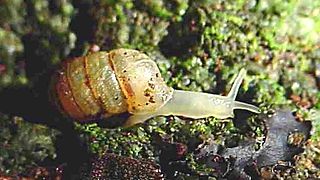
Gonospira is a genus of air-breathing land snails, terrestrial pulmonate gastropod mollusks in the subfamily Orthogibbinae of the family Streptaxidae.
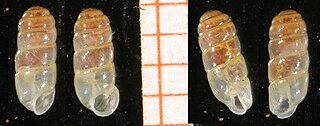
Gulella is a genus of very small air-breathing land snails, terrestrial pulmonate gastropod mollusks in the family Streptaxidae.

Lanistes is a genus of freshwater snails which have a gill and an operculum, aquatic gastropod mollusks in the family Ampullariidae, the apple snails.

Leptaxis is a genus of air-breathing land snails, terrestrial pulmonate gastropod mollusks in the family Hygromiidae, the typical snails.

Melanopsis is a genus of freshwater snails with a gill and an operculum, aquatic gastropod mollusks in the family Melanopsidae.
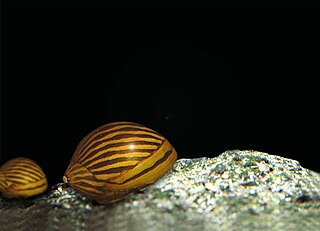
Neritina, is a genus of small aquatic snails with an operculum in the family Neritidae, the nerites. They are as well marine, as brackish water, and sometimes freshwater gastropod mollusks

Nesopupa is a genus of very small air-breathing land snails, terrestrial pulmonate gastropod mollusks in the subfamily Nesopupinae of the family Vertiginidae.
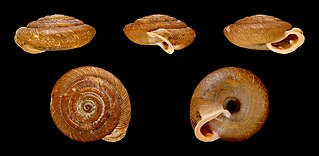
Oestophora is a genus of air-breathing land snail, a terrestrial gastropod mollusk in the family Trissexodontidae.

Rachis is a genus of air-breathing land snails, terrestrial pulmonate gastropod molluscs in the family Cerastidae.
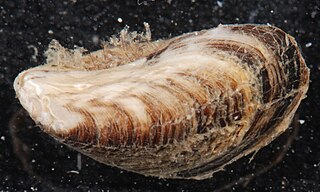
Mytilopsis is a genus of small fresh- and brackishwater mussels in the family Dreissenidae.
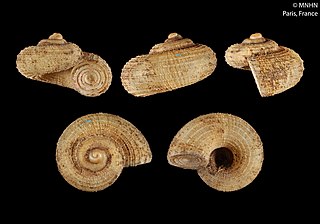
Cyclotopsis is a genus of small sea snails, marine gastropod mollusks in the family Tornidae.

Delphinonaias is a genus of freshwater mussels, aquatic bivalve mollusks in the subfamily Ambleminae of the family Unionidae.

Dothistroma is a genus of fungi belonging to the family Mycosphaerellaceae.
















